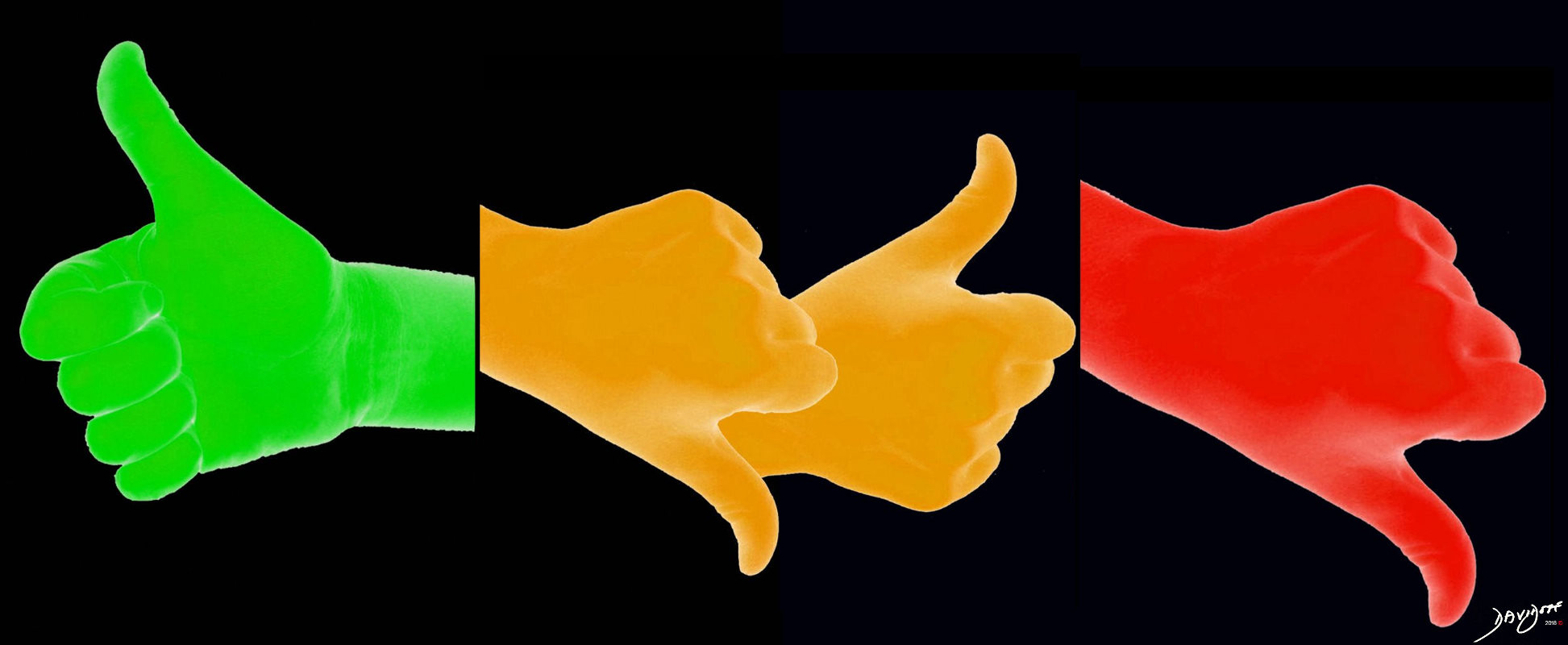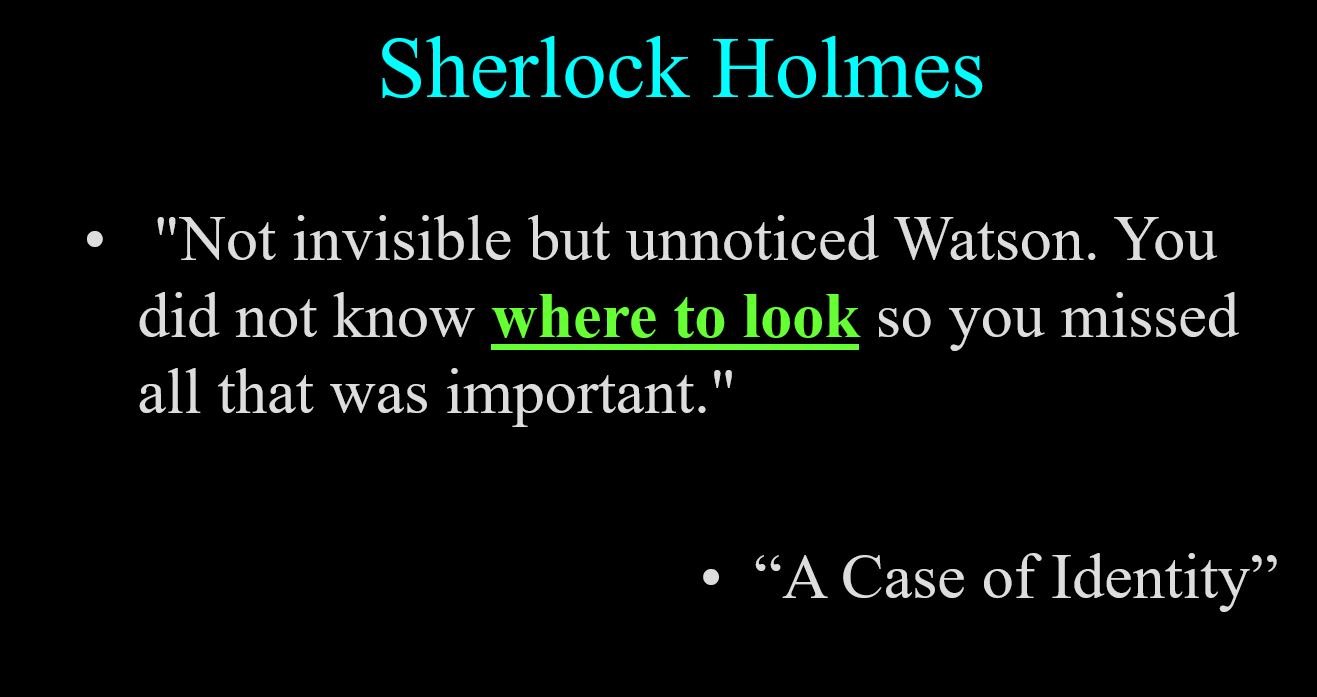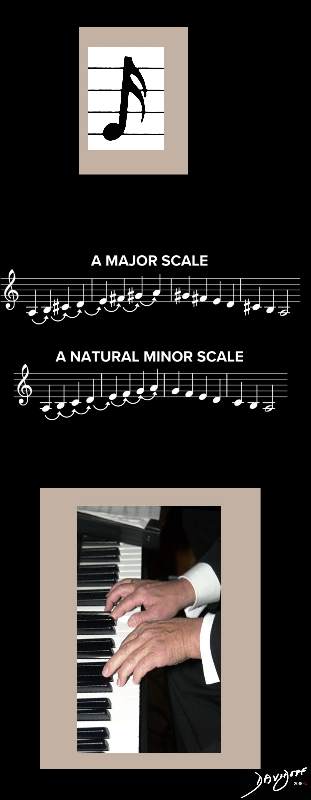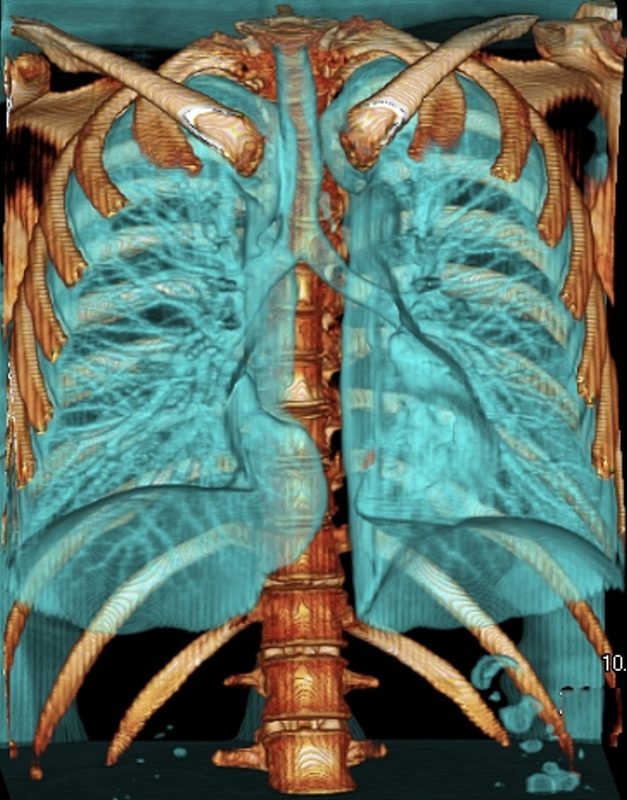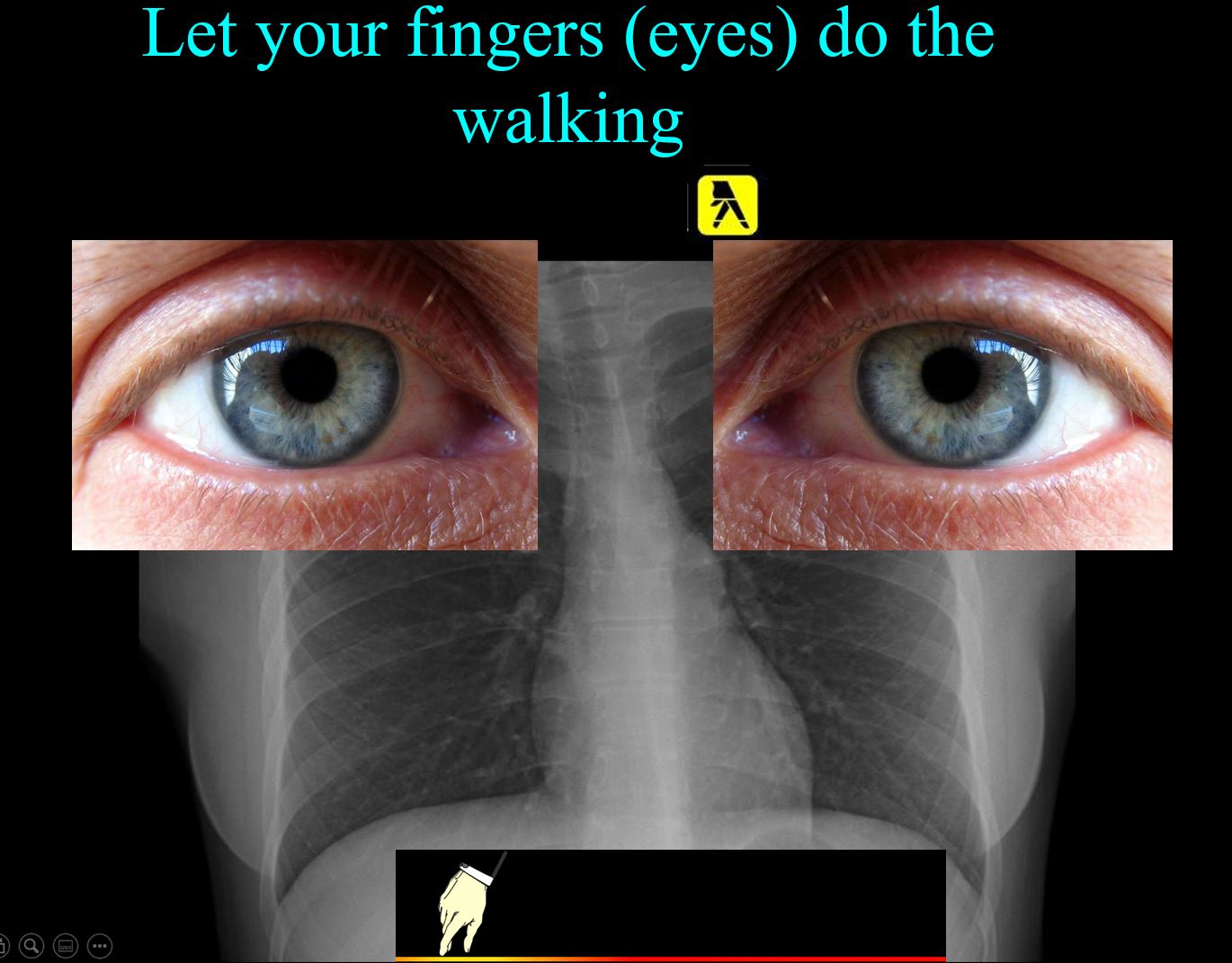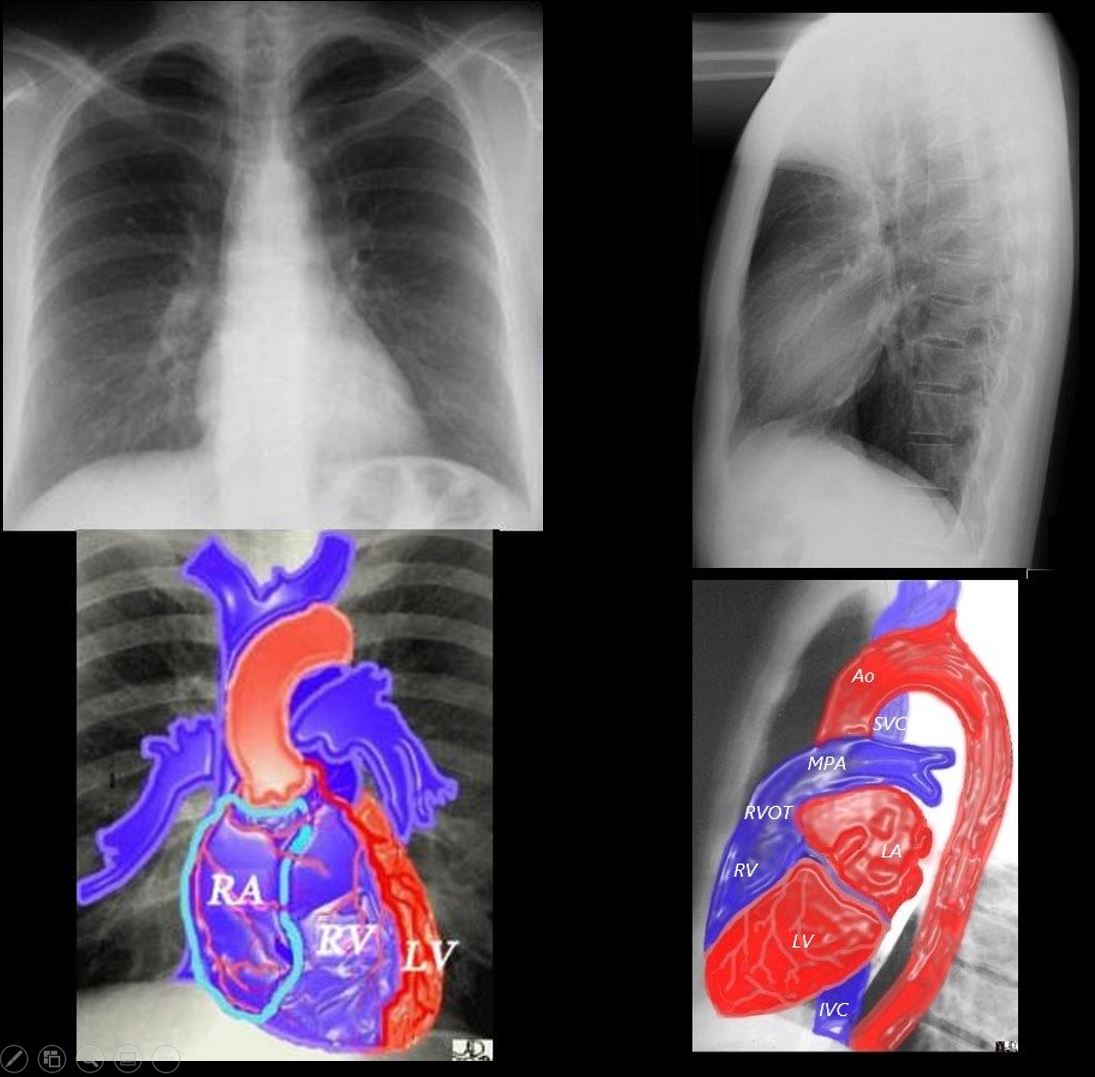Welcome
Principles
Underlying complexity there is simplicity –
- Principles of Structure
- Parts
- Size
- Shape
- Position
- Character
- Time
Why We See Things?
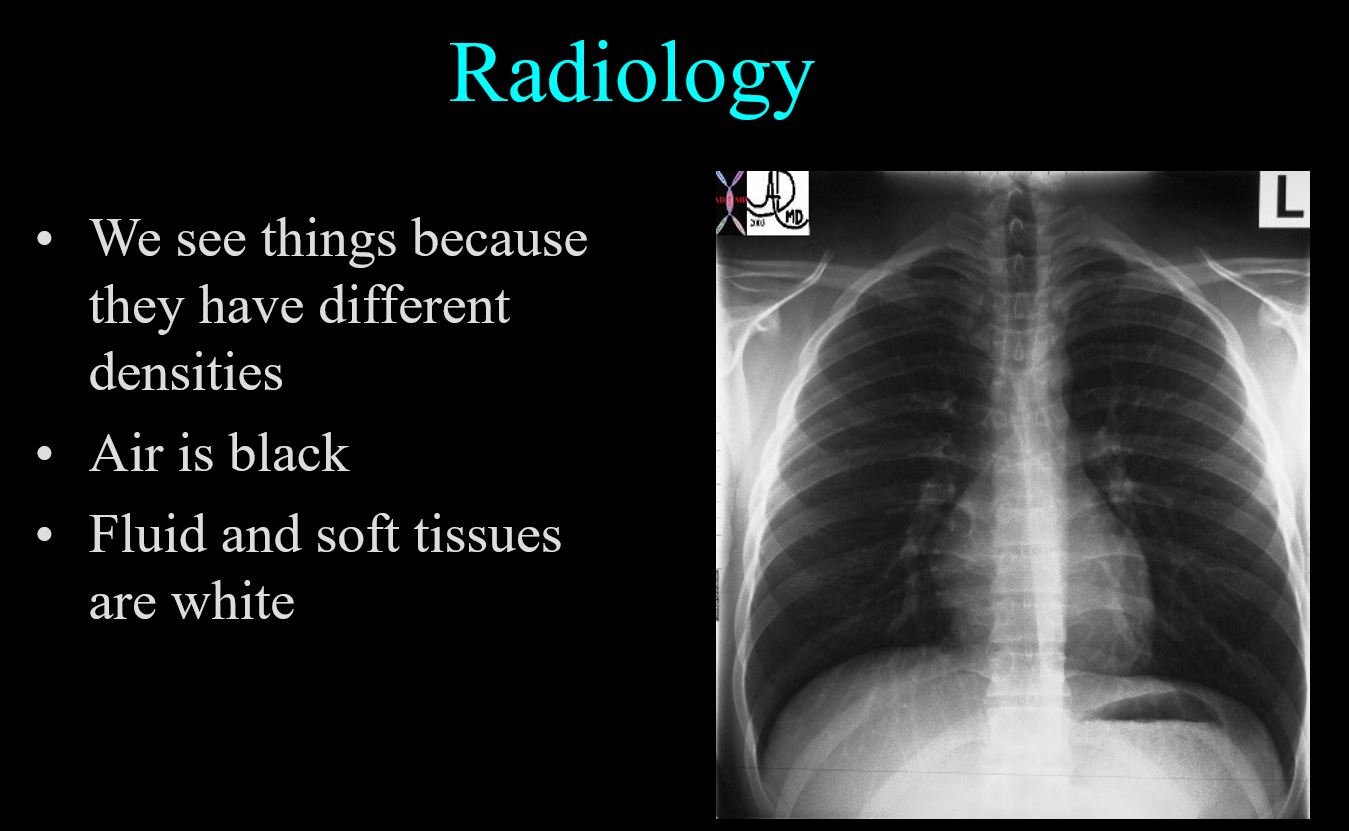
Ashley Davidoff thecommonvein.net

Ashley Davidoff thecommonvein.net

Ashley Davidoff thecommonvein.net
Silhouetting

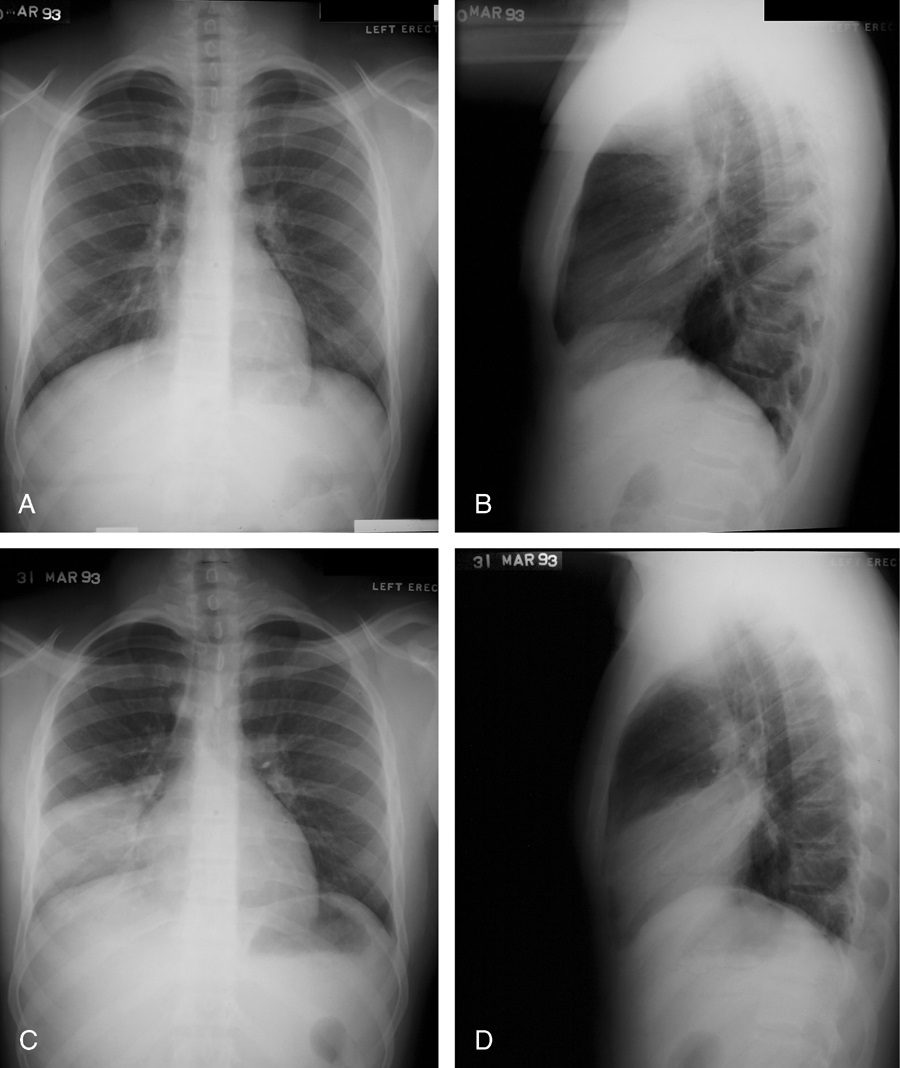
Source
Signs in Thoracic Imaging
Journal of Thoracic Imaging 21(1):76-90, March 2006.
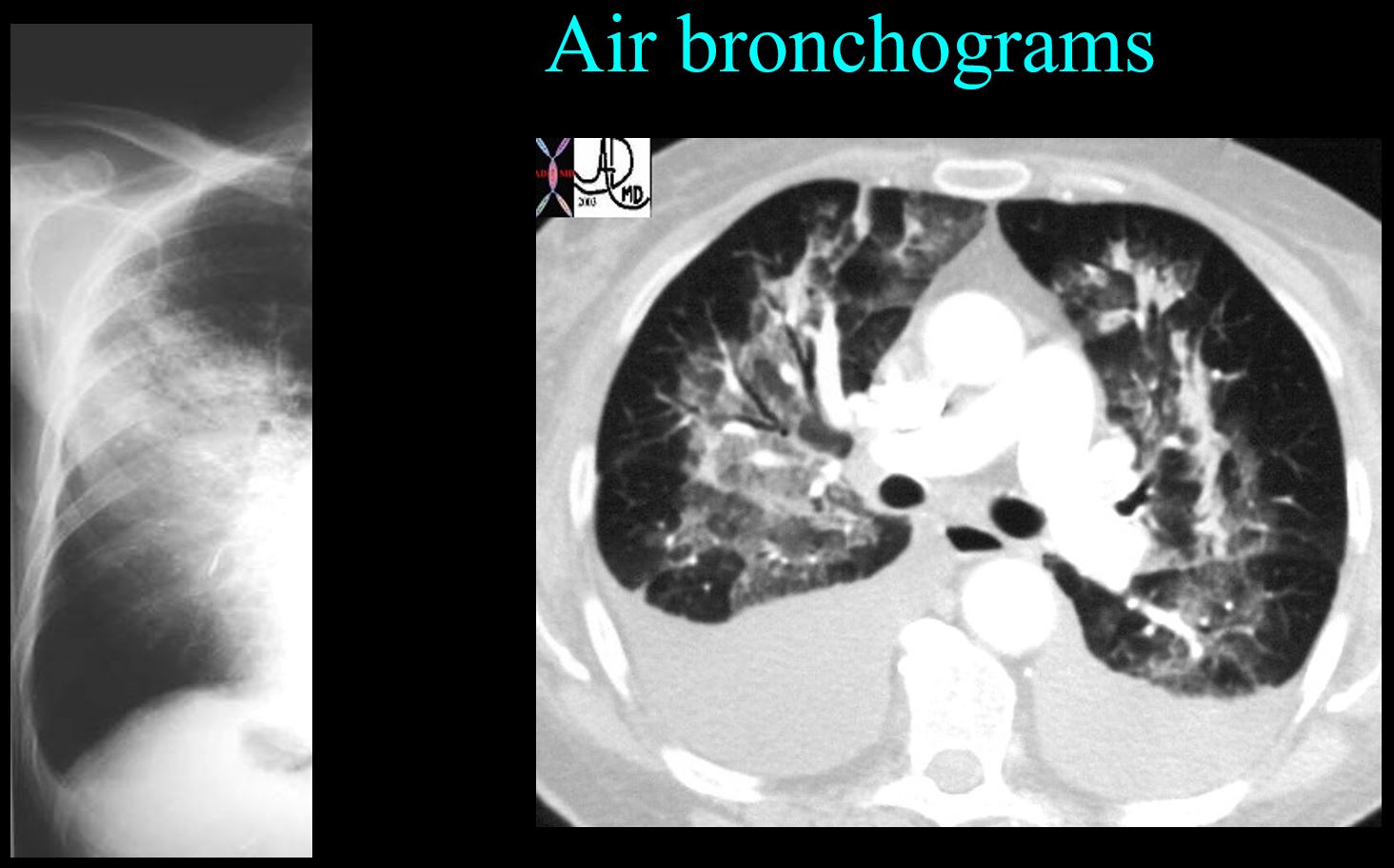
Ashley Davidoff thecommonvein.net
How to approach the Field of Radiology
My Story – Curiosity
In the Pursuit of Excellence
In the pursuit of excellence of piano playing … principles are
Notes Scales and Music
-
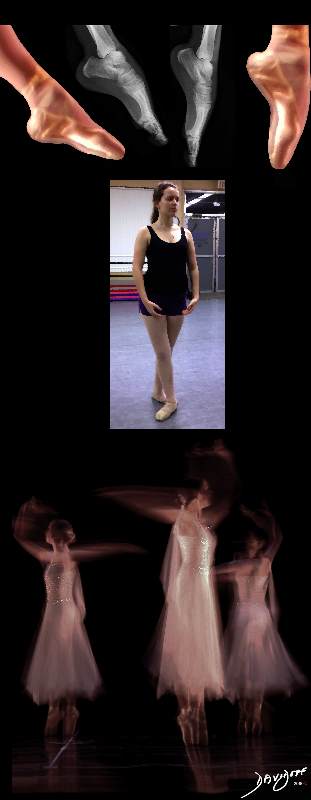
THE ART OF PERFECTING DANCE
Ashley Davidoff
thecommonvein.net
THE ART OF PERFECTING TENNIS
Ashley Davidoff
thecommonvein.netTIGER WOODS AND TOM BRADY
NOTES SCALES AND MUSIC IN THE PURSUIT OF PERFECTION
Both images are in the public domain
Story of Dr Jerry Balikian
Application to Radiology
Notes
-
-
-
Anatomy of the Lungs
Frontal Examination of the Lungs
THE HEART, LUNGS, PLEURA, DIAPHRAGM, ARTERIES, VEINS, PROXIMAL TRACHEOBRONCHIAL TREE and SKELETON
Ashley Davidoff MDParts of the Lungs- Basics
Left Lung ? Left Upper Lobe ? Frontal Projection
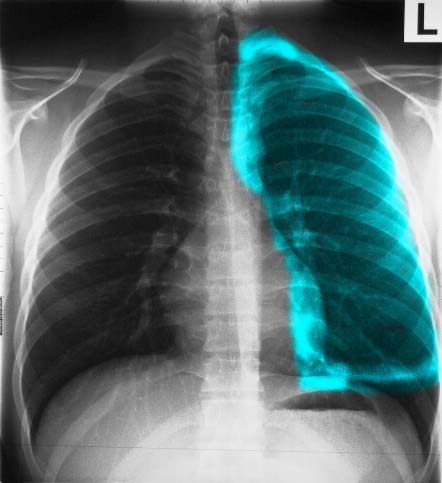
LEFT UPPER LOBE IN THE FRONTAL PROJECTION
Ashley Davidoff MDFrontal Projection Left Lower Lobe
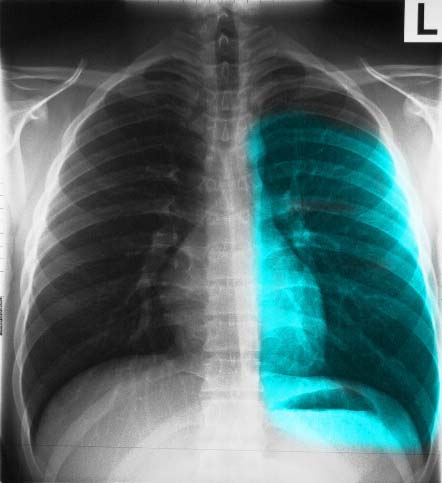
LEFT LOWER LOBE IN THE FRONTAL PROJECTION
Ashley Davidoff MDRight Lung ? Right Upper Lobe ? Frontal Projection
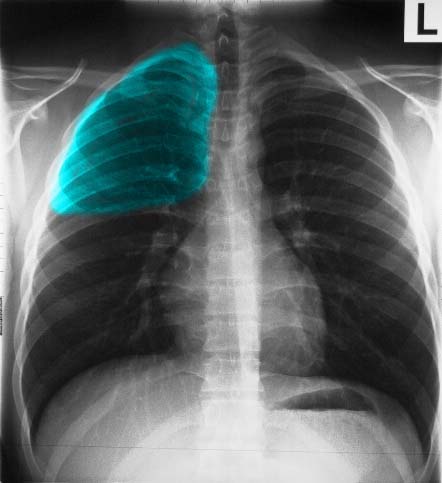
RIGHT UPPER LOBE IN THE FRONTAL PROJECTION
Ashley Davidoff MDRight Middle Lobe ? Frontal Projection

RIGHT MIDDLE LOBE IN THE FRONTAL PROJECTION
Ashley Davidoff MDRight Lower Lobe ? Frontal Projection
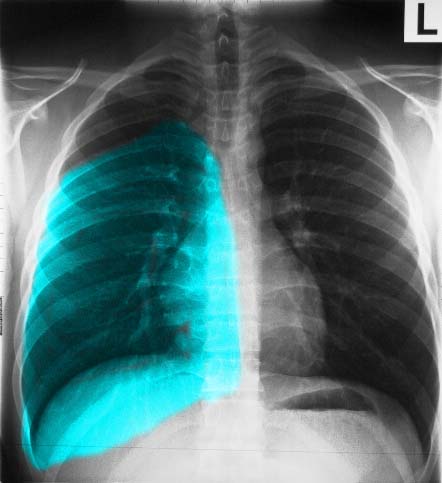
RIGHT MIDDLE LOBE IN THE FRONTAL PROJECTION
Ashley Davidoff MDLateral Examination of the Lungs
Major Fissure on the Left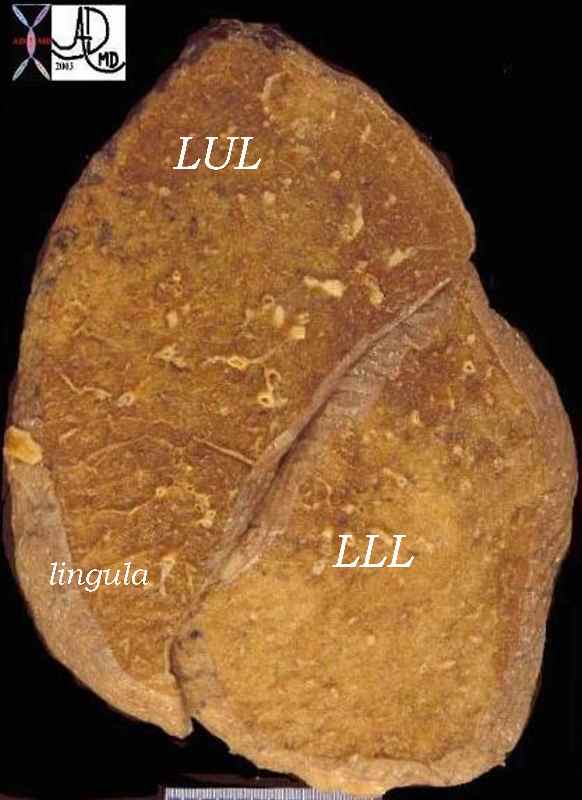
LATERAL PROJECTION ? FISSURE DIVIDES THE LEFT UPPER LOBE (INCLUDING LINGULA) AND LEFT LOWER LOBE
Ashley Davidoff MD
MAJOR FISSURE ON THE LEFT
Ashley Davidoff MDLateral Projection ? Left Upper Lobe
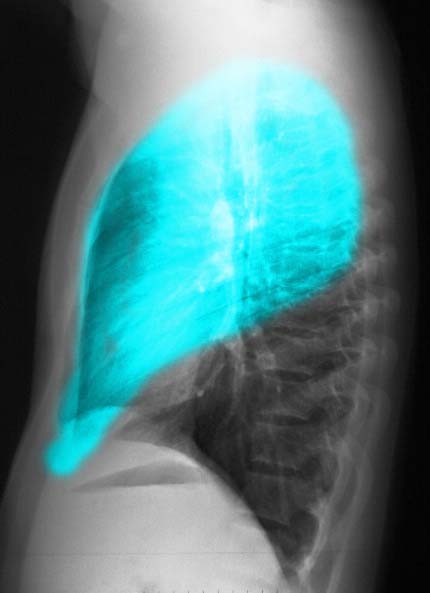
LATERAL PROJECTION, LEFT UPPER LOBE
Ashley Davidoff MDLateral Projection left Lower Lobe
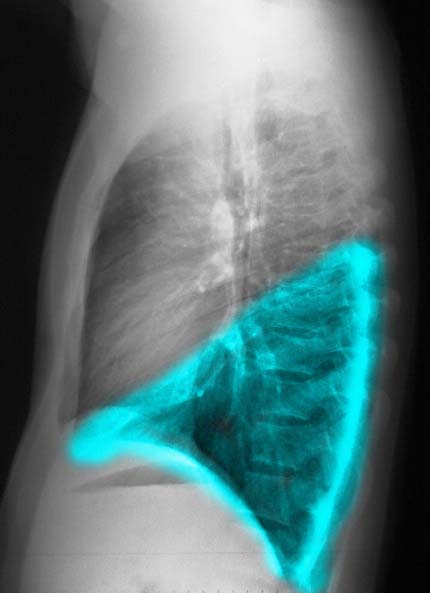
LATERAL CXR SHOWING LEFT LOWER LOBE
Ashley Davidoff MDMajor and Minor Fissures on the Right
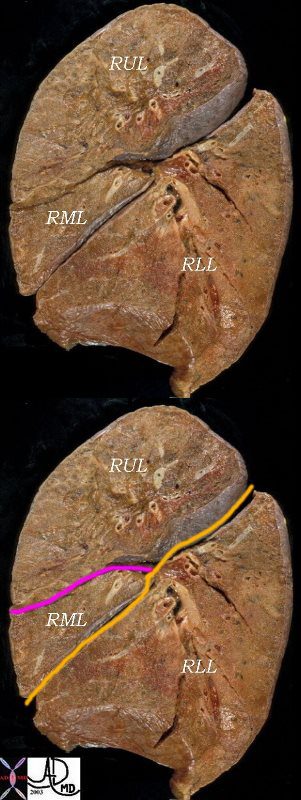
ANATOMIC SPECIMEN SHOWING MAJOR and MINOR FISSURES DIVIDING THE RIGHT LUNG INTO 3 LOBES
The right lung has a small right upper lobe (RUL) separated from the middle lobe (RML) by the minor fissure (pink,lower image) . Both the RUL and RML are anterior and are separated from the lower lobe by the major fissure (orange line)
Ashley Davidoff MD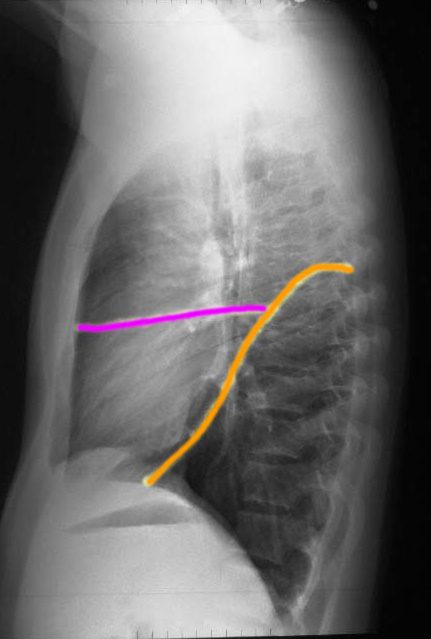
LATERAL X-RAY SHOWING MAJOR and MINOR FISSURES DIVIDING THE RIGHT LUNG INTO 3 LOBES
The right lung has a relatively small right upper lobe (RUL) separated from the middle lobe (RML) by the minor fissure (pink,lower image). Both the RUL and RML are anterior and are separated from the lower lobe by the major fissure (orange line)
Ashley Davidoff MDRight Upper Lobe ? Lateral Projection
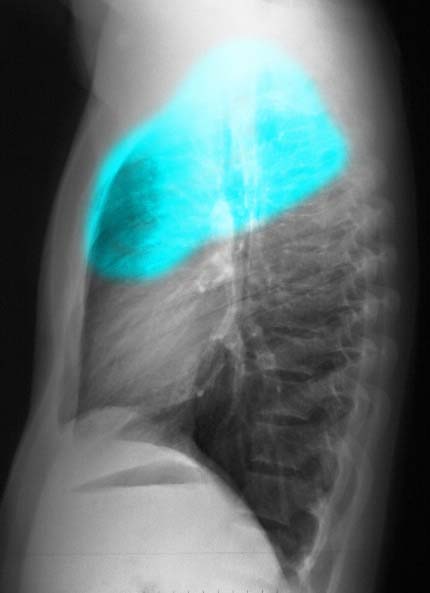
LATERAL CXR SHOWING RIGHT UPPER LOBE
Ashley Davidoff MDRight Middle Lobe ? Lateral Projection

LATERAL CXR SHOWING RIGHT MIDDLE LOBE
Ashley Davidoff MDRight Lower Lobe ? Lateral Projection
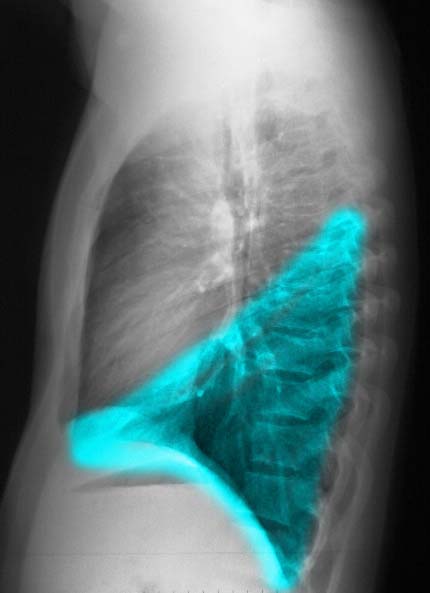
LATERAL CXR SHOWING RIGHT LOWER LOBE
Ashley Davidoff MDSummary
CXR of LEFT LUNG
Ashley Davidoff MD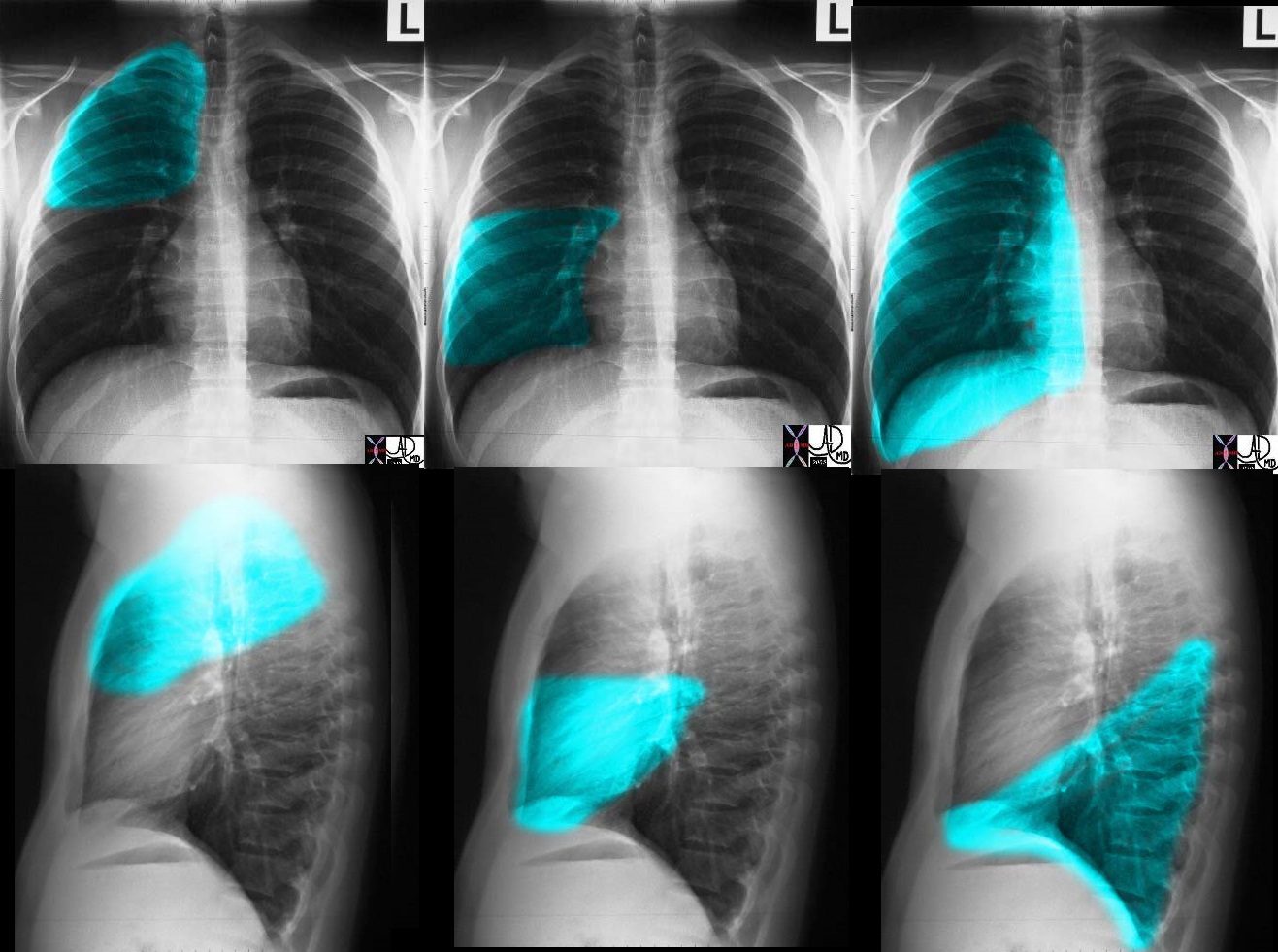
CXR of RIGHT LUNG
Ashley Davidoff MDTrachea, Main Stem Bronchi, and Carina
NORMAL FRONTAL CXR NORMAL ASYMMETRIC BRANCHING OF MAINSTEM BRONCHI
The normal CXR shows the characteristic asymmetric branching of the main stem bronchi. The right is short and stout and slightly more vertical while the left is long and thin and slightly more obtuse.
The normal carinal angle is between 40-80 degrees.
Ashley Davidoff MD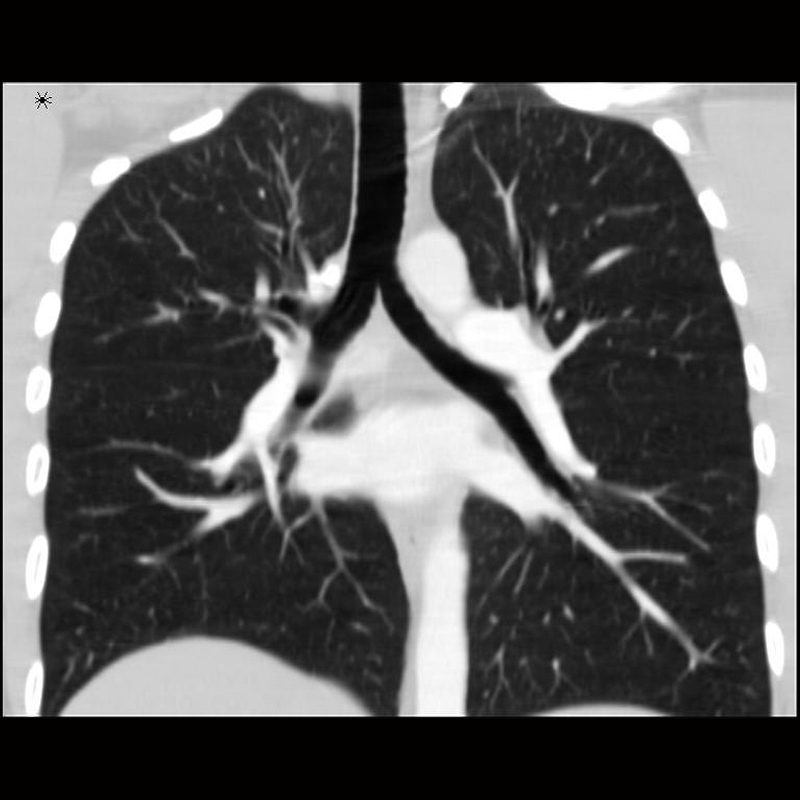
ASYMMETRIC BRANCHING PATTERN ? RIGHT SHORT AND STOUT AND THE LEFT LONG AND THIN
CARINAL ANGLE ? 40-80 degrees
Ashley Davidoff MD
THE RIGHT ? SHORT STOUT AND CUTE
THE LEFT ? TALL THIN AND GRACILE
The carinal angle
OLIVER HARDY AND STAN LAUREL IN THE 1939 FILM ? THE FLYING DEUCES 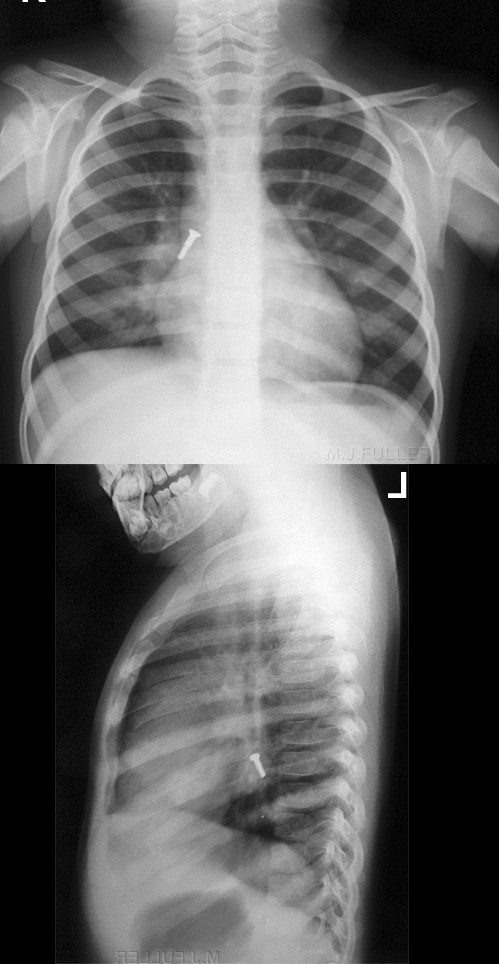
SCREW IN THE RIGHT MAIN STEM
http://www.wikiradiography.net/
N-G TUBE IN RIGHT MAIN STEM BRONCHUS
Courtesy Radiopaedia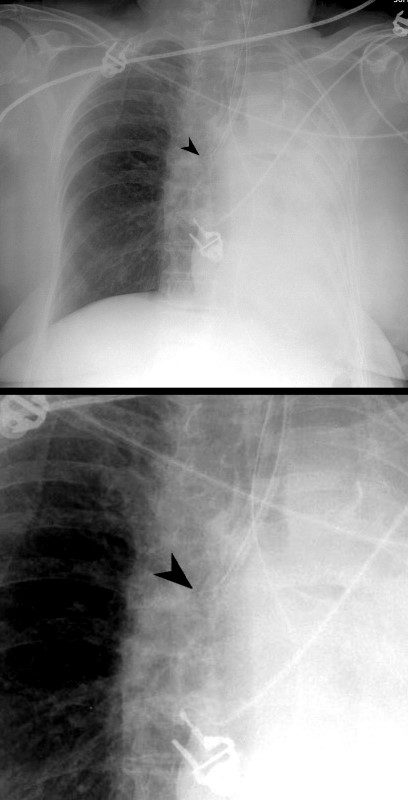 ET TUBE IN RIGHT MAIN STEM BRONCHUS
ET TUBE IN RIGHT MAIN STEM BRONCHUS
Courtesy Radiopaedia
-
-
Chambers that are Border Forming on the PA Examination

If we were to ?crack open? the chest of the chest X-ray, the structures that would dominate this bloody, black and white scene, would be the right sided chambers. The right ventricle (RV) would be the dominant anterior chamber, and would form the dominant interface with the diaphragm. The right atrium (RA) would form the border with the right lung. The RA would of course be slightly posterior to the RV. The left border would be formed by the left ventricle. Most the left ventricle is hidden posteriorly in this view. The left anterior descending artery would be visible from this anterior view. It marks the position of the interventricular septum.
Ashley Davidoff MD
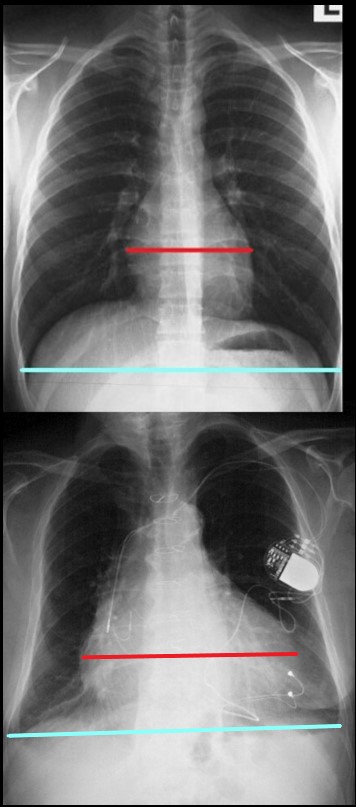
The maximum transverse length of the heart is expressed as a percentage of the maximum length of the internal diameter of the chest. When this ratio – the cardiothoracic ratio (c t r) is greater than 50% cardiomegaly is present. The top image is normal and the bottom reflects cardiomegaly
Ashley Davidoff MD
There are Two Basic Common Shapes of Cardiomegaly
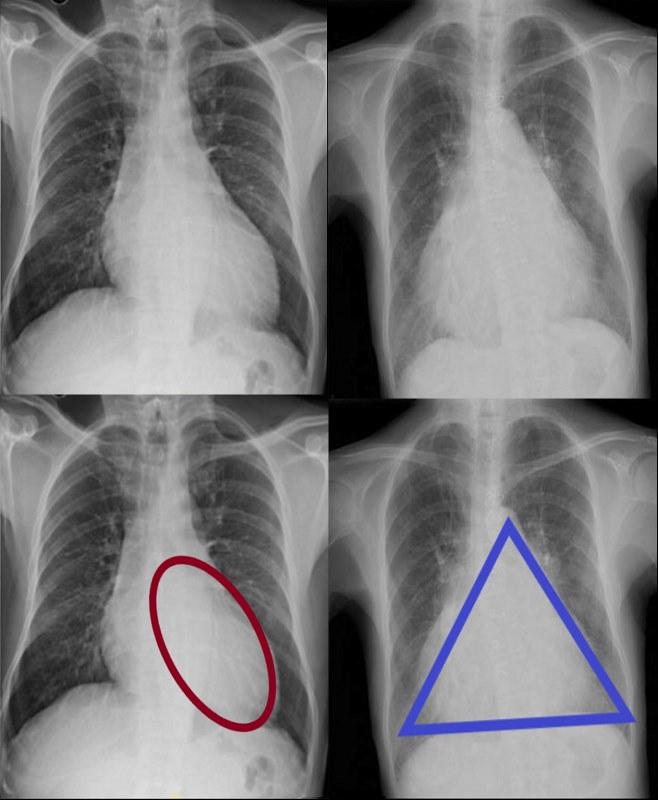
CARDIOMEGALY ? TWO BASIC TYPES -OVOID and TRIANGULAR
The ovoid form which suggests left ventricular dominance and triangular form which suggests right ventricular dominance.
Ashley Davidoff MD
The Ovoid Form of Cardiomegaly ? Consider LVE

SHAPE OF THE LEFT VENTRICLE
The enlarged LV (a,b) is shaped like an oval and it is likened to a rugby ball or an American football placed on the field at kick off time. LVE on CXR is mostly assessed by an increased cardiothoracic ratio as well as the accentuation of the ovoid shape. (lower images c, d,e, f)
Ashley Davidoff MD
Vector of the Enlarging LV ? Rotate Down and to the Left
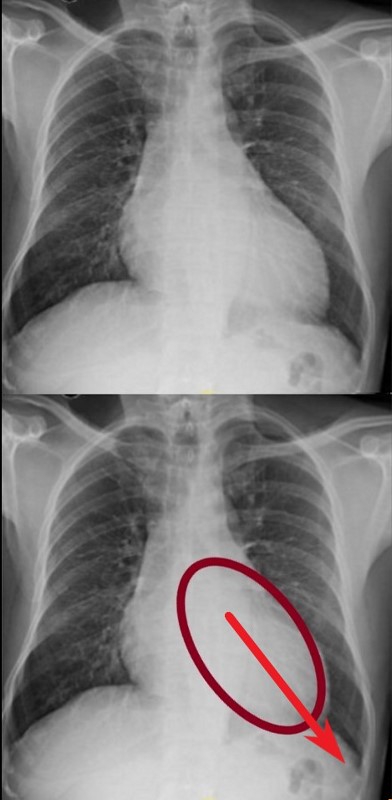 VECTOR FOR LV ENLARGEMENT
VECTOR FOR LV ENLARGEMENT
DOWN AND OUT
The left ventricle (LV) enlarges in a posterior, downward and lateral direction resulting in the characteristic changes of LVE on CXR
Ashley Davidoff MD
Clinical Exam ? Focal LV Thrust

The left ventricle (LV) enlarges in a downward and lateral direction resulting in the apical impulse displacement and increase forcefulness of the apical tap.
Ashley Davidoff MD
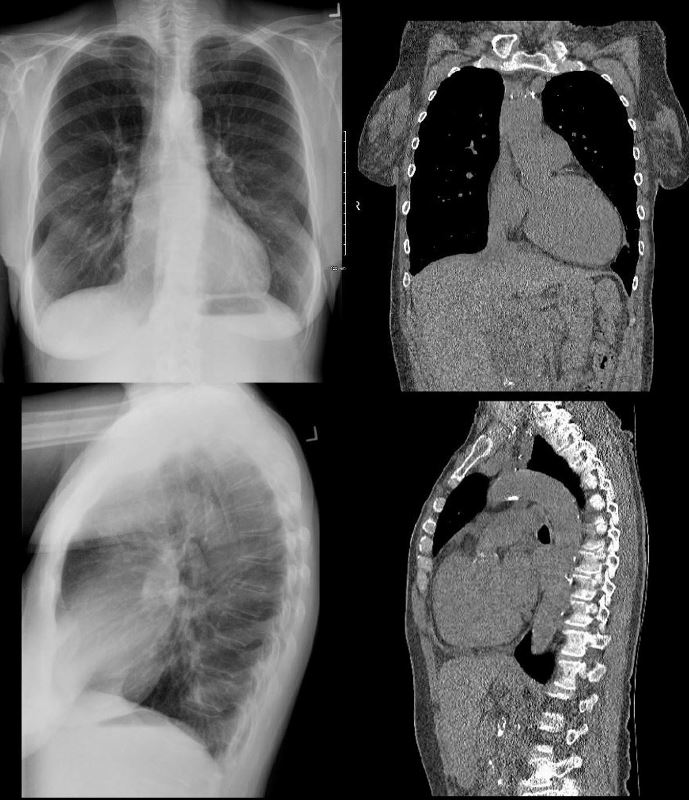
62 year old female with acute chest pain atrial fibrillation, hypotension admitted to ICU. Clinical evaluation was considered to be non-ischemic cardiomyopathy with EF by echo of about 20%. She was hypotensive and, in the ICU, and CXR showed acute CHF with cardiomegaly. The TEE was more in keeping with segmental dyssynergy, Cardiac cath showed occluded RCA bot good collateralization from the LAD. MRI showed subendocardial LGE in the inferior and inferolateral portions of the LV consistent with a prior infarction and EF of 20%
Ashley Davidoff MD
The Triangular Form of Cardiomegaly
Consider RVE or any disease from the left side that may cause RVE eg mitral stenosis
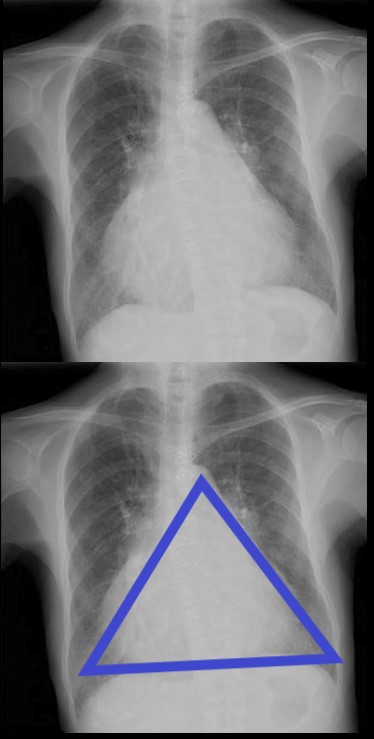
TRIANGULAR SHAPED HEART ? SUGGESTING RIGHT VENTRICULAR DOMINANCE. MITRAL STENOSIS PULMONARY HYPERTENSION
71 year old Asian female with rheumatic heart disease dominated by calcific mitral stenosis mild MR, moderate tricuspid regurgitation and secondary pulmonary hypertension.
Ashley Davidoff MD
Note the Basic Shape of the RV is Triangular in almost all Views

The enlarged LV (a,b) is shaped like an oval and it is likened to a rugby ball or an American football placed on the field at kick off time. LVE on CXR is mostly assessed by an increased cardiothoracic ratio as well as the accentuation of the ovoid shap. (lower images c, d,e, f)
Ashley Davidoff MD
Vector of the Enlarging RV ? Rotate Laterally to the Right
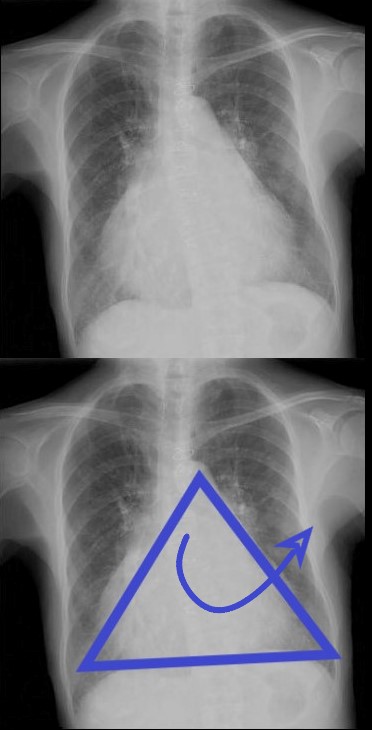
ANTERIOR LEFTWARD
The right ventricle (RV) enlarges with a clockwise rotation resulting in an upward turning of the apex and enlargement in a anterior and leftward lateral direction.
Ashley Davidoff MD
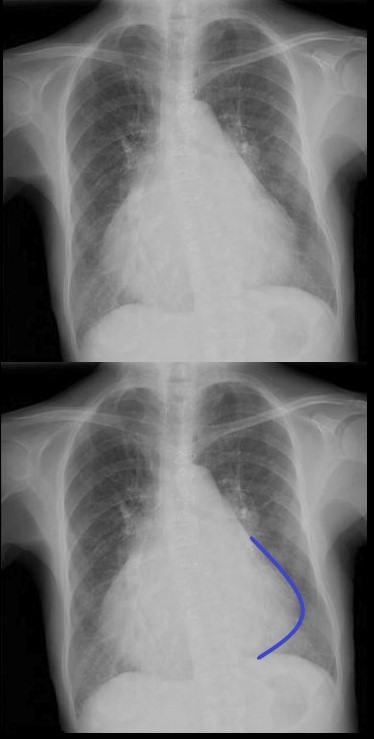
As the right ventricle (RV) enlarges with a clockwise rotation the apex of the small ventricle succumbs to the larger silhouette of the RV which pints upward and to the left and has been called the ?proud breast? appearance.
Ashley Davidoff MD

Ashley Davidoff MD
Clinical Exam of the RV ? Diffuse Anterior Parasternal Heave
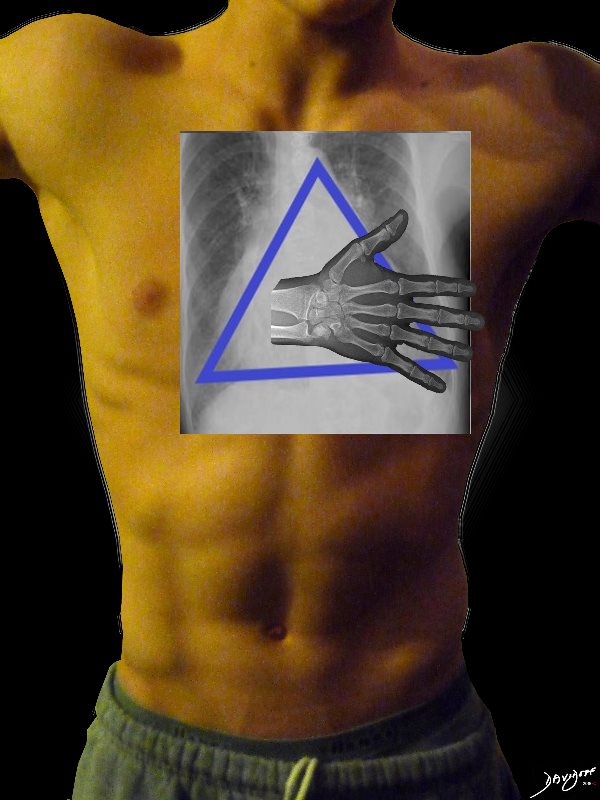
The right ventricle (RV) enlarges in a anterior, upward and lateral direction resulting in the broad based parasternal pulsation which on clinical examination is identified as a parasternal heave identified with the base of the extended hand
Ashley Davidoff MD
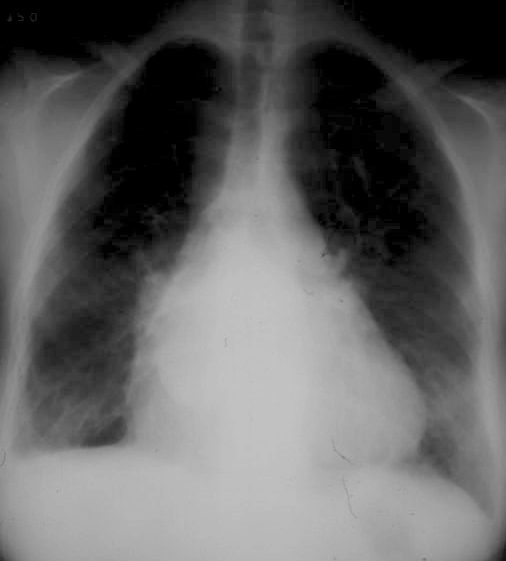
Triangular shaped heart with RVE LAE
Ashley Davidoff MD
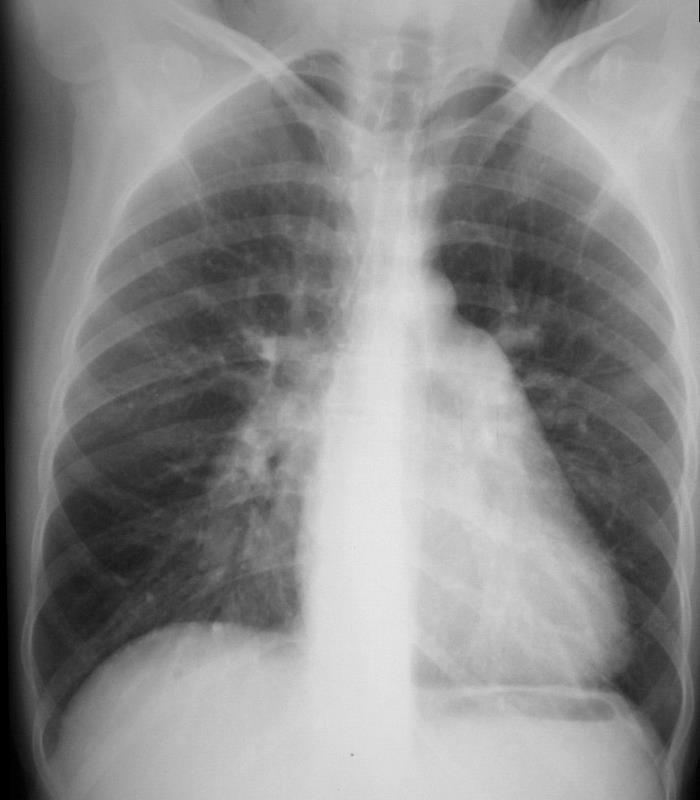
Frontal x-ray with triangular shaped heart due to pulmonary hypertension with enlarged MPA and enlarged descending RPA .
Ashley Davidoff MD
What about the Right Atrium (RA) and Right Heart Border?
The RA does not make much a statement on the frontal CXR unless very large

If we were to ?crack open? the chest of the chest X-ray, the structures that would dominate this bloody, black and white scene, would be the right sided chambers. The right ventricle (RV) would be the dominant anterior chamber, and would form the dominant interface with the diaphragm. The right atrium (RA) would form the border with the right lung. The RA would of course be slightly posterior to the RV. The left border would be formed by the left ventricle. Most the left ventricle is hidden posteriorly in this view. The left anterior descending artery would be visible from this anterior view. It marks the position of the interventricular septum.
Ashley Davidoff MD
The Enlarged Right Atrium
The right atrium is the most difficult chamber to assess unless it is very large in which case it will manifest on the frontal CXR with a very large right paravertebral border.
-
- enlarged, globular heart
- narrow pedicle
- gross enlargement of the right atrial shadow, i.e. increased convexity in the lower half of the right cardiac border
- right atrial convexity is more than 50% of the cardiovascular height
- right atrial margin is more than 5.5 cm from the midline
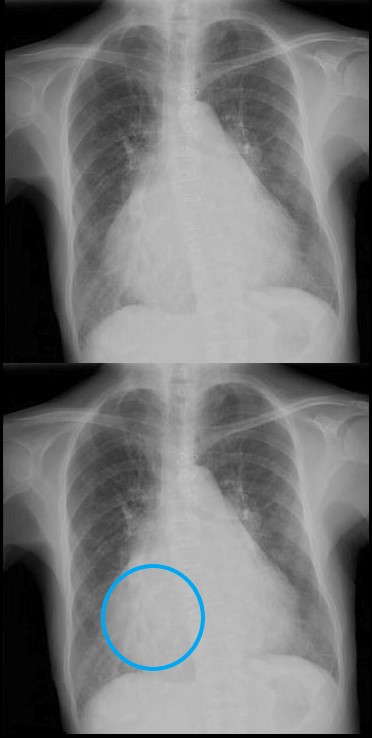
The right atrium is the most difficult chamber to assess unless it is very large in which case it will present on the frontal CXR with a very large right paravertebral border. This is a 71 year old female person with rheumatic heart disease with pulmonary hypertension and tricuspid regurgitation hence resulting in a large right atrium (RAE)
Ashley Davidoff MD
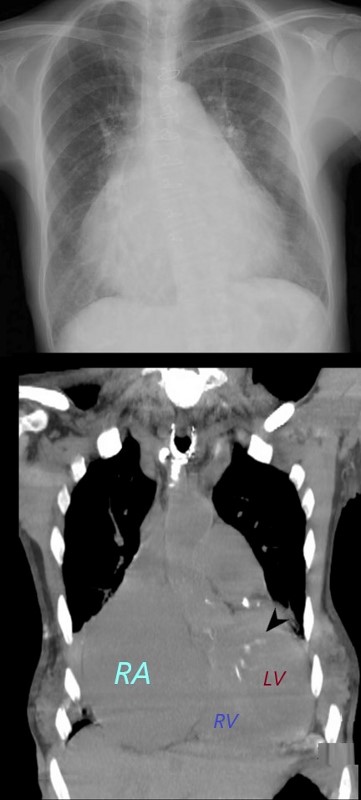
The right atrium is the most difficult chamber to assess unless it is very large in which case it will present on the frontal CXR with a very large right paravertebral border. The frontal CXR and coronal CT through the RA is from a 71 year old female with rheumatic heart disease with pulmonary hypertension and tricuspid regurgitation resulting in a giant right atrium (RAE). The RA accounts for the large bulge of the right border of the cardiac silhouette. The black arrowhead in the loer image points to the calcified mitral valve.
Ashley Davidoff MD
The Left Atrium
3 signs
-
- Carinal Angle
- Double Density
- Filling in of the Left Atrial Appendage Bay
The Carina and the Carinal Angle
 NORMAL FRONTAL CXR NORMAL ASYMMETRIC BRANCHING OF MAINSTEM BRONCHI
NORMAL FRONTAL CXR NORMAL ASYMMETRIC BRANCHING OF MAINSTEM BRONCHI
The normal CXR shows the characteristic asymmetric branching of the main stem bronchi. The right is short and stout and slightly more vertical while the left is long and thin and slightly more obtuse.
The normal carinal angle is between 40-80 degrees.
Ashley Davidoff MD
 ASYMMETRIC BRANCHING PATTERN ? RIGHT SHORT AND STOUT AND THE LEFT LONG AND THIN
ASYMMETRIC BRANCHING PATTERN ? RIGHT SHORT AND STOUT AND THE LEFT LONG AND THIN
CARINAL ANGLE ? 40-80 degrees
Ashley Davidoff MD
The Abnormal Carinal Angle
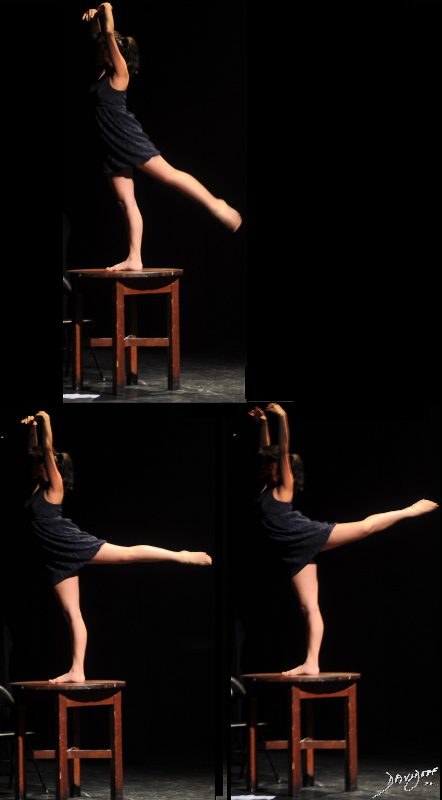
A dancer demonstrates a normal carinal angle (upper image) and as she continues to extend her left leg, (lower images) the angle becomes greater than 80 degrees and in terms of the carinal angle becomes abnormal.
Ashley Davidoff MD

MITRAL STENOSIS WITH ENLARGED LEFT ATRIUM ? WIDENED CARINAL ANGLE DOUBLE DENSITY ENLARGED LEFT ATRIAL APPENDAGE
The frontal CXR demonstrates findings consistent with mitral stenosis including a widened carinal angle (teal blue and black arc), a double density (red arc) and an enlarged left atrial appendage (maroon arc).
The overall shape of the heart is triangular suggesting right ventricular enlargement. A mitral valve prosthesis is in position
Courtesy of Radiopaedia
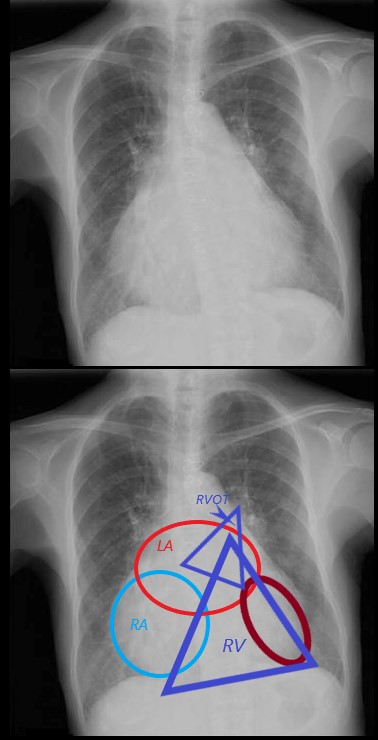
PARTS OF THE ENLARGED HEART ON FRONTAL CXR in MITRAL STENOSIS PULMONARY HYPERTENSION AND COR BOVINUM
71 year old Asian female with rheumatic heart disease dominated by calcific mitral stenosis mild MR, moderate tricuspid regurgitation and secondary pulmonary hypertension.
The frontal view shows an enlarged RA (light blue) characterized by a prominent right heart border. The right ventricle is enlarged as noted by the triangular shape of the cardiac silhouette, an the upturned (?proud breast?) appearance of the left heart border, both reminiscent of RVE. The left atrium is also significantly enlarged characterised by the widened carina and the straight heart border caused by a combination of atrial appendage enlargement and pulmonary hypertension. The LV (maroon) is normal in size
Ashley Davidoff MD
-
-
-
Where to Look The Physics of Air and Fluid
-
Gravity, Air and Fluid
-
-
notes-scale-music-0013-low-res-1.jpg
Gravity Air and Fluid
Remember the roles they play in Supine and upright projections
Ashley Davidoff thecommonvein.net -
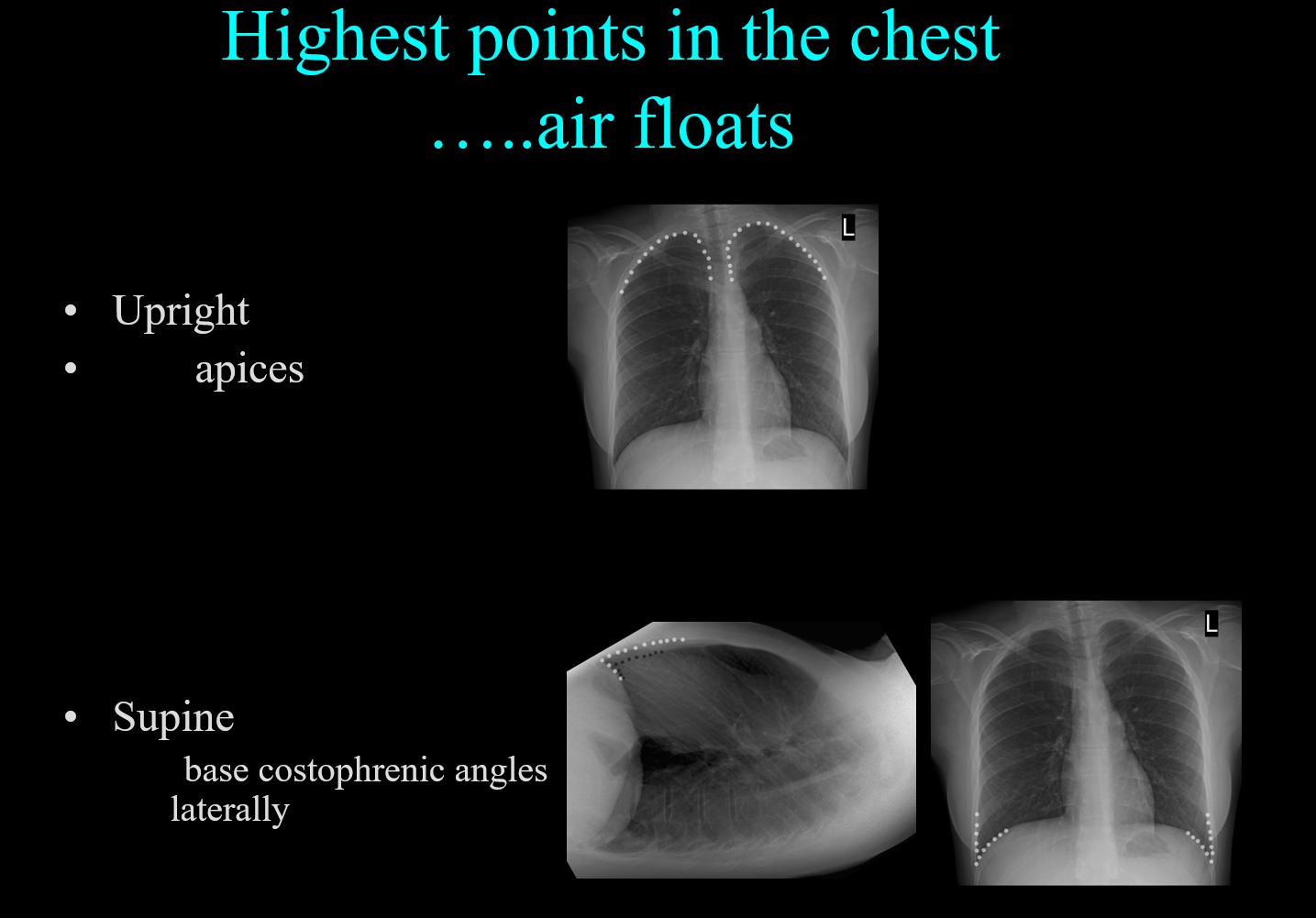
Air in the Upright and Supine Projection
Ashley Davidoff thecommonvein.net
- Pneumothorax
-
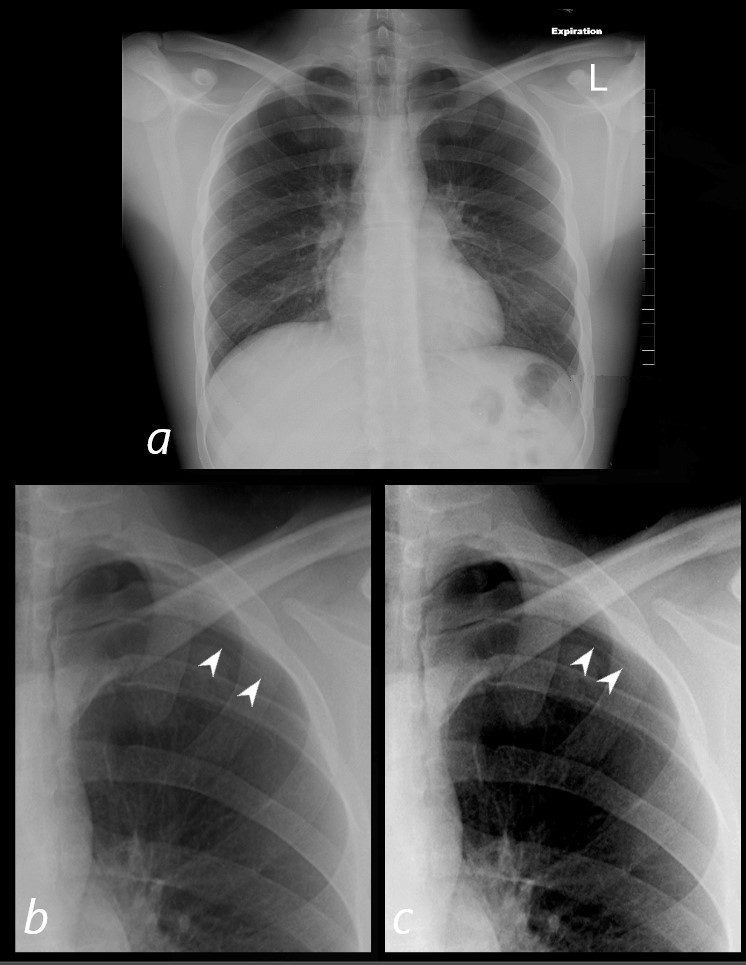
SMALL APICAL PNEUMOTHORAX IN AN UPRIGHT CXR TAKEN IN EXPIRATION.
In an upright position a pneumothorax rises to the apex of the lung and assumes the shape of the apex because it exerts pressure on the lung apex which yield to the greater pressure. The expiration film accentuates the pneumothorax because it further reduces the pressure in the lungs and increases the pressure difference between the PTX and the intraparenchymal pressure.
The PTX is barely seen in (a) and is better seen in the magnified views (b and c) and with increasing contrast (c) the faint line of the the pleura becomes better visualized (white arrowheads).
Ashley Davidoff MD -

DEEP SULCUS SIGN
Portable supine examination in the ICU shows a pneumothorax in the right subpulmonic region
Ashley Davidoff MD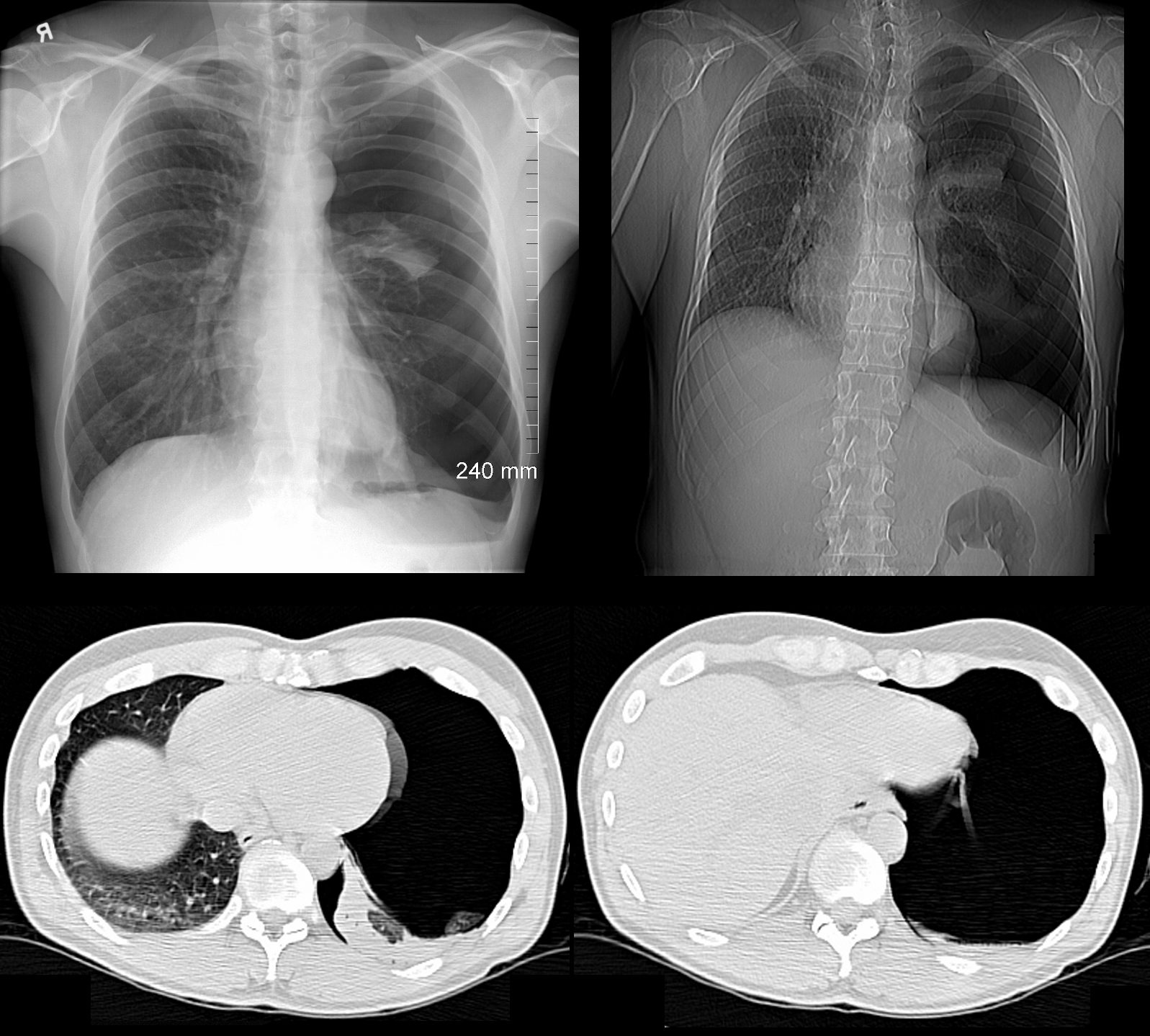
Spontaneous Tension Pneumothorax
49 year old male with a cough presents for a Chest Xray which showed a tension pneumothorax. Chest tube was placed emergently in the radiology department.
Ashley Davidoff MD TheCommonVein.net
117300cPleural Effusion

Fluid in the Upright and Supine Projection
Ashley Davidoff thecommonvein.net -
Small Effusion May Only Seen on the Lateral Exam

SMALL EFFUSION ONLY IDENTIFIED ON THE LATERAL EXAMINATION
A small effusion is not identified on the PA chest since it is hidden by the diaphragm and the effusion first fills the posterior recess because it is most inferior. The lateral examination is required to identify the effusion
Courtesy How to Interpret CXR Strong Medicine
https://www.youtube.com/watch?v=wOpDvUO5sD8 -

Typical shape of a moderately large right pleural effusion
Case courtesy of RMH Core Conditions, Radiopaedia.org, rID: 34401 -
Veiling Opacity

Veiling Opacity left pleural effusion in the supine projection
Case courtesy of RMH Core Conditions, Radiopaedia.org, rID: 34401 -
Scales
-
Learning how to look so that you can see
-
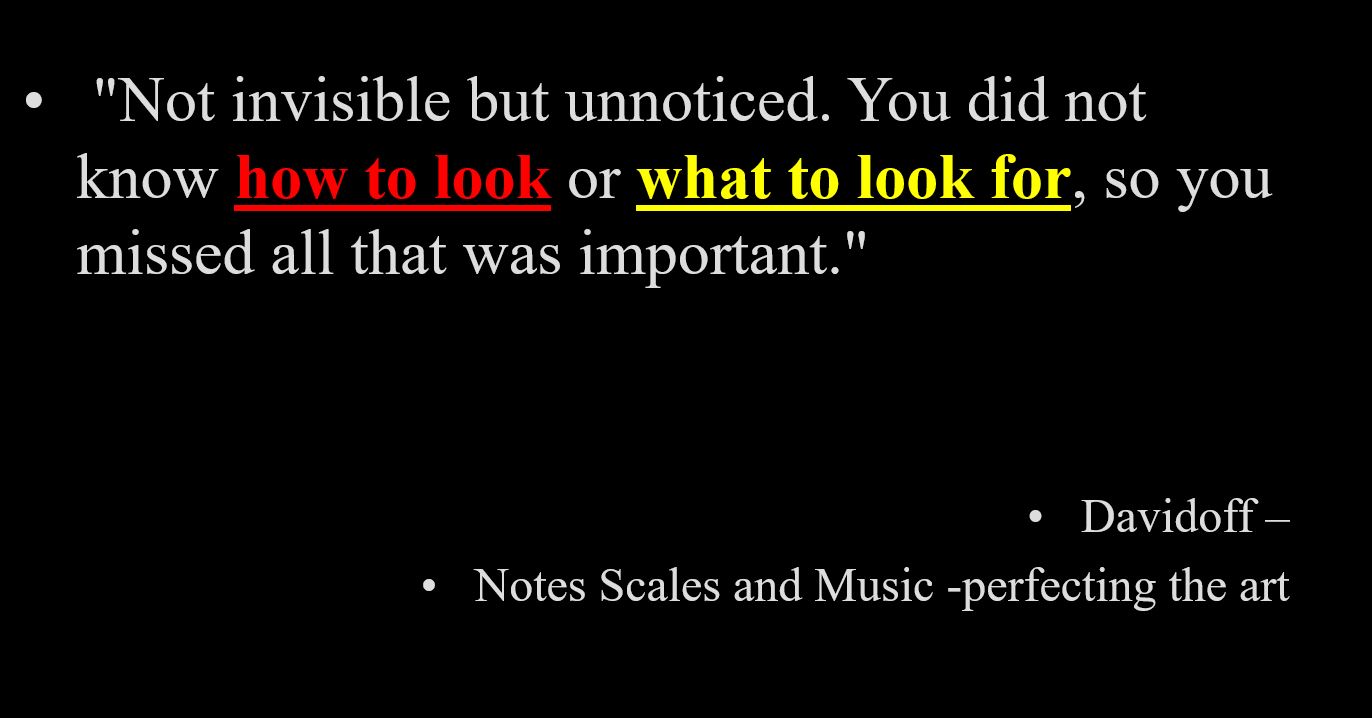
How to look and
what to look for
Ashley Davidoff thecommonvein.net -
Notes Scales and Music
- Scales
- Have a fluid and logical method of looking (search pattern) and
- practice practice practice
- Have a fluid and logical method of looking (search pattern) and
-
SCALES
- 4 Review Spaces relating to 4 areas of major disease
- Pleura – PTX and Effusions
- Lungs – Pneumonia and Masses
- Hila – Masses and CHF
- Heart – Megalies and Failure
First Scale – Pleural Run
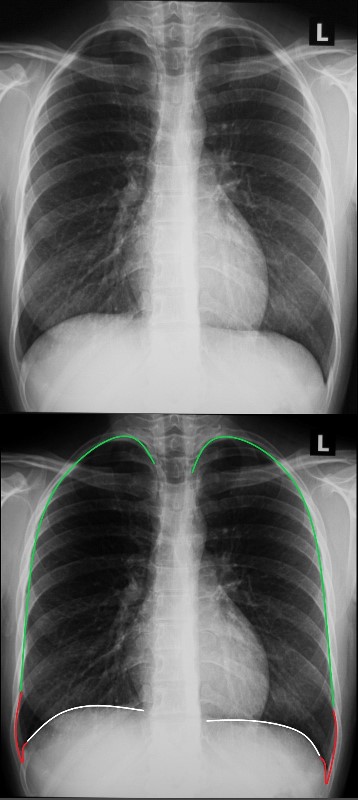
Ashley Davidoff MD
Pattern – start at the white lines to the right and left of the thoracic vertebra running along the diaphragms into the pleural recesses, up the lateral walls to the apices
2nd Scale – Lung Loops

Ashley Davidoff MD
- Pattern –
-
- Come down the trachea and and
- loop the upper lung fields, then the
- mid lung fields, and finally the
- lower lung fields
- looking for
- symmetry,
- masses,
- infiltrates,
- interstitial changes
-
3rd Scale – Skiing on the Moguls
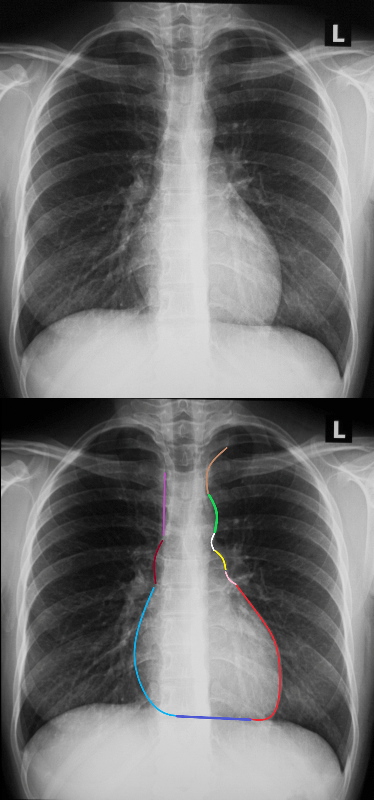
A methodical approach to evaluation of the cardiac silhouette is likened to skiing down a mogul laden ski slope and then taking a trip on the ski lift back to the top of the mountain. The ski slope starts at the left subclavian artery (light brown)
, followed by the mogul of the aortic knob (bright green) at the bottom of which is the A-P window (white) only to be presented with a second mogul of the main pulmonary artery(yellow), and then the bay of the left atrial appendage (pink)and finally free at last of moguls and an exciting and accelerating ski down the LV (red)
We then have to take a walk back to the ski lift. At the junction of the LV (red) and the RV (blue) , if we take a right ward look up the mountain we can spot the LAD on top of the interventricular septum.
The walk along the border of the RV is terminated at the junction of the RV (dark blue) and the right atrium (light blue). At this point we wait in line to get on to the ski lift. We ride up the right hand border of the right atrium (light blue) a little rough bump over the ascending aorta )maroon) and then straight to the top along the SVC (pink).
Ashley Davidoff MD
- Pattern of the Ski Run –
- Start at the left apex at the left subclavian artery,
- jump the aortic mogul and
- land in the AP window, and then
- jump the PA mogul,
- land in the LA appendiceal bay, and then
- ski all the way down the LV.
- Walk back to the ski lift via the inferior border of the RV and then the RA.
- At the bottom of the RA get on to the ski lift as the IVC enters the RA
- and then take the lift up the mountain via the RA ,
- portion of the ascending aorta and the
- the SVC
4th Scale – Hilar Hoops
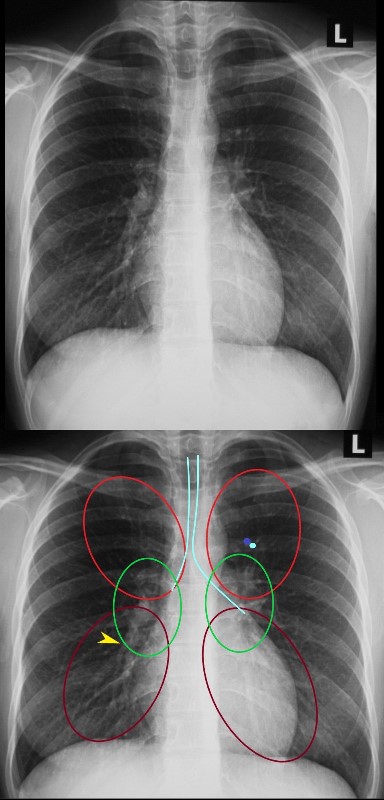
Down the airways for the carinal angle
Upper vs Lower Vessels
Artery vs Bronchus
Middle – Hilar Size and Shape
Lower – Descending Bronchovascular Bundle and specifically RPA yellow arrow
Ashley Davidoff MD
- Pattern of the Hilar Hoops –
-
- Trip down the trachea – Specifically to look at the carinal angle
- Upper hoop specifically to look at pa- bronchus ratio
- Middle Hoop – Specifically to look at hilar size and shape
- Lower Hoop – Specifically to look for redistribution and clarity of RPA
-
|
The Shapes of the Heart in Health and Disease |
|
From top left ti right and across the rows they are: The normal heart , the ?football? of LV enlargement the ?triangle? or ?proud breast? of RV enlargement, ?snowman? of total anomalous pulmonary venous return, big PA mogul of pulmonary hypertension, ?egg on its side? of D transposition of the great vessels, ?boot shaped? heart seen in both pulmonary atresia and Tetralogy of Fallot, the long smooth combined Ao and PA mogul that has a differential diagnosis of L transposition, absence of the pericardium, and juxtaposition of the atrial appendages, the box shaped large heart of Ebstein?s anomaly, dextrocardia , and the water bottle? heart of a large pericardial effusion. 07197 Images are a combination of images from a personal collection and borrowed from the internet for educational purposes only. Some of the sources are unknown and are used for educational purposes alone 86774b02 |
Normal Pulmonary Artery

When a line is drawn from the aortic knob to the left edge of the heart, (red line) the pulmonary artery should lie medial to that line (ie along the line drawn to 1.5cms medial to the line)
Ashley Davidoff MD TheCommonVein.net
Pulmonary Hypertension
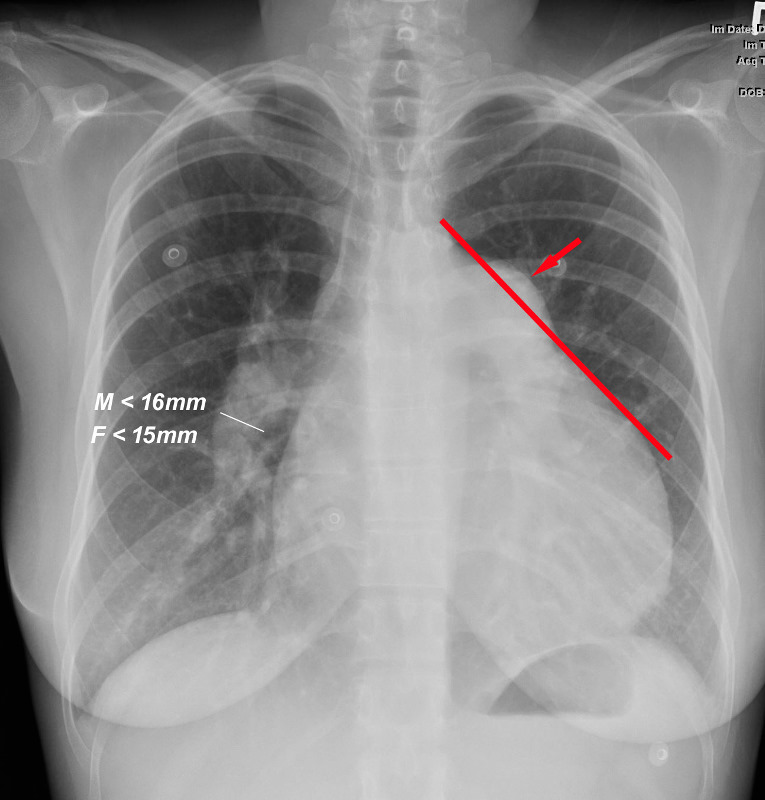
When a line is drawn from the aortic knob to the left edge of the heart, (red line) the pulmonary artery lies lateral to that line indicating an enlarged pulmonary artery most commonly caused by hypertension . In this instance the size of the descending right pulmonary artery is greater than 15 mms confirming the presence of pulmonary hypertension
Ashley Davidoff MD TheCommonVein.net
Music
- Music
- Know how best you learn
- accumulate integrate and continually improve your
- knowledge
- experience and
- memory so you can make
- sound judgment when it is
- game time
Structured Reporting The Template
- EXAMINATION:
- Chest, 2 views
- HISTORY:
- cough
- Single PA view or 2 views o the chest
- COMPARISON:
- No prior studies are available.
- FINDINGS:
- Lines and Tubes
- Heart and mediastinum: Normal.
- Lungs and pleura:
- Lungs are clear.
- No pneumothorax.
- No pleural effusions.
- Bones: No acute osseous abnormality.
- IMPRESSION:
- 1. No active chest disease.
-
- Comparison Studies
- Lines and Tubes
- Cardiac exam on the CXR
- Lungs
?Infiltrates
?Effusions
?Pneumothorax
The Secondary Lobule
A Love Story
Summary
- Principles of Structure
- Parts
- Size
- Shape
- Position
- Character
- Time
-
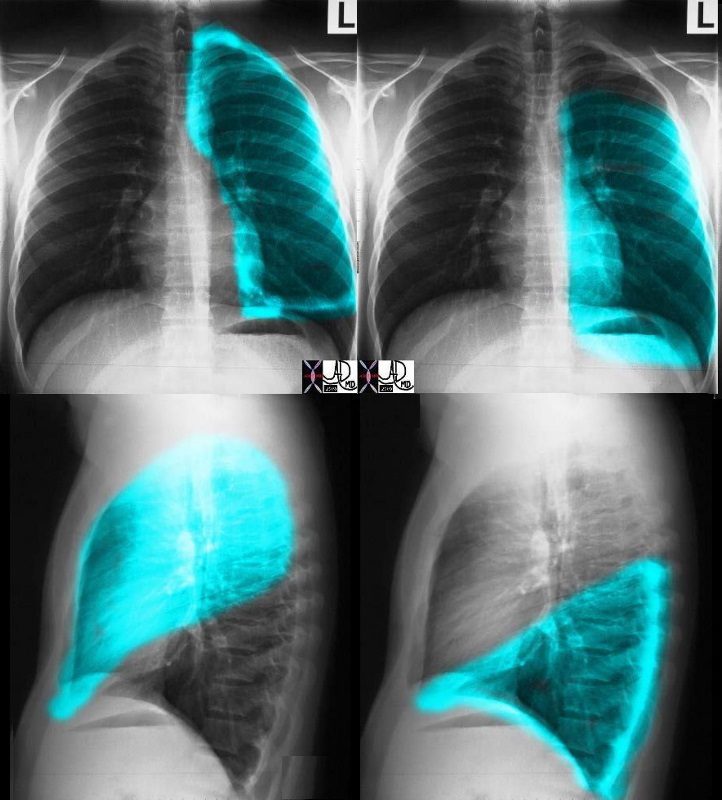
CXR of LEFT LUNG
Ashley Davidoff MD
CXR of RIGHT LUNG
Ashley Davidoff MD- Music
- Know how best you learn
- accumulate integrate and continually improve your
- knowledge
- experience and
- memory so you can make
- sound judgment when it is
- game time
- Music

